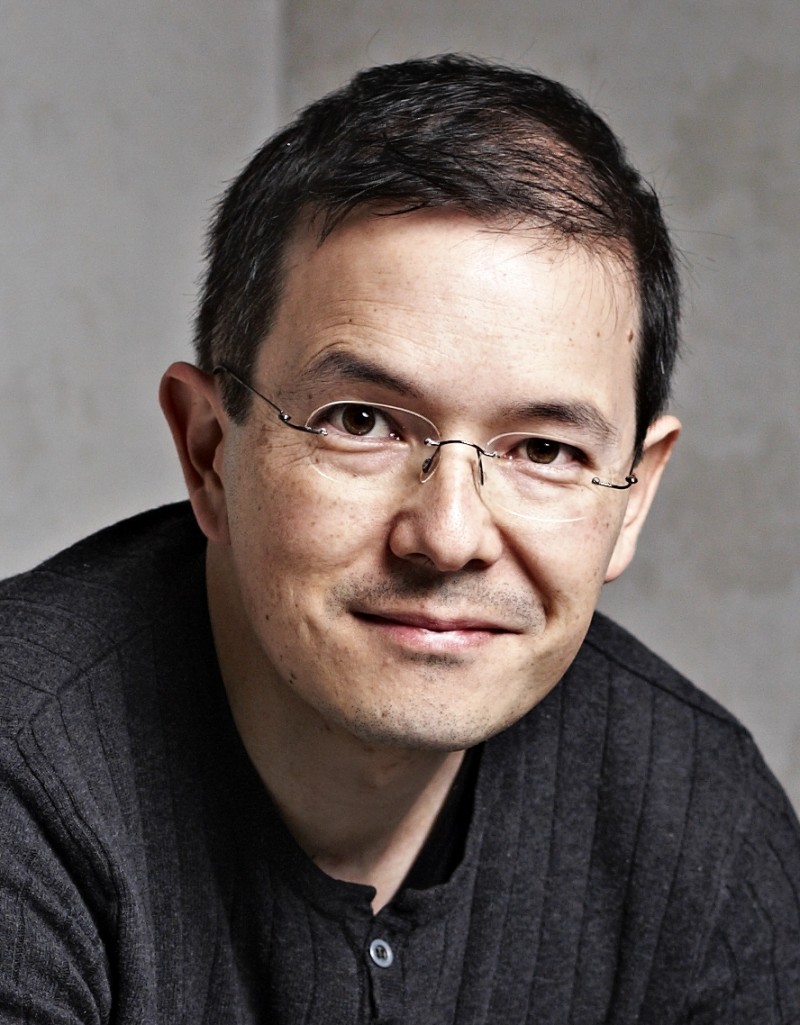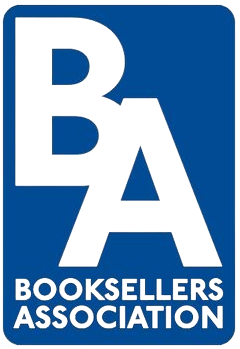Please note: We will continue to deliver your books and furniture until Thursday 18 December for schools, and Tuesday 23 December for public libraries. We will then close for the Christmas break, with deliveries resuming from Monday 5 January 2026. We wish all of our customers a very merry Christmas and a Happy New Year!
For help, advice and telephone ordering call our team on 0121 666 6646
Are you sure you wish to delete this basket?()
This action cannot be undone.
Sorry, something went wrong
Please report the problem here.
Q&A with Shaun Tan, winner of Kate Greenaway Medal 2020

June 17th 2020
Q: With the ‘Extinction Rebellion’ and the re-wilding that has occurred through lockdown, the exploration of nature and urban environments in Tales from the Inner City feels very timely. How did you decide on the animals to feature?
In a way, animals chose me. I write and doodle plenty of different things in small sketchbooks, and some of these congeal into little stories on the page, where one thing connects with another to form a narrative. Most don’t, but some do. And those that do often feature animals, which you can see in other stories long before this collection. In Tales from Outer Suburbia, for instance, there’s a blind reindeer, a water buffalo in a vacant lot, dogs, turtles, cats, even a dugong beached on a front lawn. It could be that animals are just such a fun, provocative and even easy entry point into telling human stories, their presence has a way of instantly puncturing one reality and letting in another, of entering a realm of dreams and ancient history. This might be why animals are the mainstay of human storytelling, from ice-age cave drawings to children’s literature in the 21st century. They are the backbone of early human imagination and mythology. Perhaps it’s the ability to displace emotion and thought onto another, which can loosen up themes and render them universal. Perhaps it’s an even deeper memory of being other animals ourselves. After all, we weren’t always homo sapiens.
Q: What makes illustration an exciting form through which to express yourself?
The directness. It hits you all in one go – pop! – and then works at you slowly if it’s a good illustration, revealing further layers, like a map of experience rather than a storyline. But more than that, I think the attraction to illustration is that it can show very precisely things that are hard or too laborious to explain in words. In a book like The Arrival for instance, it’s very hard to describe the strange details of a new city if you had to write about them, and that would also take away some of that strangeness, it would diminish it, so I dropped all words completely.
Q: The composition of the paintings in Tales from the Inner City is amazing, can you describe how these were created?
I used a lot of physical models. Some were actually animal toys, placed in little cardboard rooms or forests make of sticks and coloured paper, lit with desk-lamps, photographed, printed out and painted over to develop preliminary ideas. In the case of the lungfish story, I sculpted, cast and painted a whole bunch of plaster, human-faced fish, arranged them carefully on a table, and that became the basis for the illustration. Light becomes a critical element; I believe painting is essentially thinking about light and shadow, and using physical objects means you can play with that a great deal. In recent years I’ve been using objects and sculptured figures more and more as the basis for paintings, my recent book about office drudgery, Cicada, was as much sculpted as painted, most time spend sculpting a big insect and building tiny office spaces from cardboard. It’s a wonderful way of playing with composition, returning to a kind of sandbox play with toys, and realising those visualisation processes are some of the best. Not just entertaining and fun, but very skilled and engaging a range of senses, not to mention potent memories of childhood.
So the resulting sketches are a combination of drawing, photography and digital manipulation. I will use any kind of material that works, and they can often look incredibly scrappy, a sort of illustrator’s equivalent to a doctor’s prescription. But all the spirit of a final painting should be there, a condensation of visual notes. Then begins the process of translating that onto a larger canvas, adding finer details. The paintings for Tales for the Inner City are the largest I’ve ever done for a book, most images being set on canvases about 150cm by 100cm. I used oil paint, the medium with which I’m most comfortable, mainly because it’s quite forgiving when you change your mind – easy to repaint, wipe off, glaze. It’s also a slow medium, it suits the pace of my thinking. One reason for the large scale was my love of using big palette knives, scrapers and shower squeegees to put down rough swathes of paint using whole arm gestures, instead of just the wrist. These are great for creating unpredictable effects and textures, whether it be the stains of concrete walls, forest undergrowth, a rising black wave or the dreamlife of a hippo. This is why I love paint, it always slips out of your control a bit, and the older I get, the more I want it to do just that, to embrace more accidents. To approach a more natural, spontaneous, less contrived state of image-making.
Q: Were any of the stories in Tales from the Inner City more challenging than others and, if so, how?
The one I struggled with the most is also one that ended up being pretty simple, about pigeons. Which is really about money. I’ve long been fascinated by the subject of money as a kind of mass-delusion, thing of fictional value that works only if we all imagine the same thing at the same time. I heard a podcast once about stone coins on the Pacific Island of Yap as an excellent illustration of this; these carved coins became so big, you couldn’t easily carry them around; they would just sit by the road and everyone knew (and agreed) who owned what. One time such a big coin fell from a canoe to the bottom of the sea, irretrievably. But everyone knew it was there, and continued to trade it! It’s such a perfect example of the economy we find ourselves in today, trading objects of value that don’t really exist, and it cuts to the core of what’s wrong with our relationship to nature. It’s become almost entirely abstracted. And also susceptible to sudden collapse: all it takes is for people to stop believing in the fictional value of something like the stock market. Which, as you can imagine, is alarmingly easy, because it isn’t real.
I wanted to compress this tale of Yap economics into a story, and tried so many times to do so, but it always felt forced. In the end I settled on another idea that had been haunting me for years, of a building in the air that nobody can enter, except pigeons. Everybody believes it is the most valuable real estate in the world, but it’s actually quite decrepit and filled floor to ceiling with bird poo. It’s my version of the giant coin at the bottom of the sea; also a subtle comment on the high-end art market, but that’s another story!
Anyway, the most interesting thing about that sunken Yap coin is that it probably now supports all manner of coral and fish, so has actually acquired material value in the real world, that is, the world of nature. In the same way that pigeons and pigeon poo is actually valuable for an ecosystem – it’s the real treasure, the central irony of that story. Anyway, it’s interesting the way stories twist and turn, and resist all efforts to lecture on a theme, to engineer a message. At the end of the day they must be poetic, open to interpretation, and fun. Just like pigeons in a floating building. But hey, I just got my chance to prattle about the stone coins of Yap, so I’m happy now!
Q: You’ve collaborated with some amazing and highly accomplished writers – John Marsden (The Rabbits), Gary Crew (The Viewer) – have these influenced your approach to illustration?
Gary was an early mentor and I think the fundamentals of his approach, of not showing what you are telling and vice versa, continues to inform my work now. He’s a very versatile writer with a good understanding of visual images, both as a practice and historical context, having lectured on the history of illustrated literature. I was very lucky to make his acquaintance early on. And to benefit from his interest in new illustrators, to risk a few bets on them. John Marsden had a quieter influence, as we did not collaborate, but the problem of illustrating his very strange, very short poem The Rabbits left me to sort out a great deal of artistic problems on my own. I really struggled conceptually with that book at first, and almost didn’t do it, but glad I did, spurred on by memories of Animal Farm and Watership Down which had left a strong impression in my childhood. Marsden’s text pushed my style of thinking further, following on from what Gary had espoused, and encouraged me to hunt for a personal vision. With all those early books, I also owe a big debt to my editor Helen Chamberlin – to whom Tales from the Inner City is dedicated – for letting my imagination run pretty wild and defending my work against more conservative elements in children’s publishing, because it can be a very cautious place. Of course, she was also very good at pointing out when things might be getting too weird and obscure! But I think she has a great ‘wait and see’ approach to early drafts, not judging things too soon, at least not before an artist has a chance to judge it for themselves.
Q: What are the differences between responding to the text of another and creating your own? Do you have a preference?
They both have pros and cons. Generally, I prefer creating my own text, but that’s nothing to do with quality, only the ability to be flexible, to edit quite radically, and also have the freedom to abandon a project without hurting anyone’s feelings That’s kind of important! It also helps me to evolve ideas, working alone on both text and image. I will write one thing, illustrate it differently, rewrite in response to that image, but with new ideas, draw it again and so on; it’s a ping-pong process. You can do this with another writer, and I did so with Gary Crew, and working collaboratively on film projects, but it’s not as nuanced, it requires too much consensus and explanation, which can mitigate the weirdness of an idea. Perhaps it’s harder for me to be entirely original or ambiguous collaboratively, at least at a very co-creative level, although I’ve seen others do that, especially siblings or those with a long partnership history. Perhaps they benefit from not having to explain things to each other.
On the other hand, the beauty of another person’s text is its otherness. It comes from a foreign source, and creativity is all about responding to foreign sources. Of encountering unexpected problems. In the case of The Rabbits for instance, it set up narrative and representational problems that I would never have courted on my own, I would have thought them too hard or too risky. Projects can also move along more quickly in partnership, because a collaborator – if they are the right one – can point out strengths and weaknesses more quickly than you might find on your own. You can also help each other against the inevitable frustrations or creative dismay that comes with any project, you can converse, set deadlines for which each is accountable, all those benefits of team activity. In fact, in an ideal universe I would be collaborating all the time, only that I have such a backlog of personal projects that I need to dig out of my subconscious first.
Tales from the Inner City is available now.




